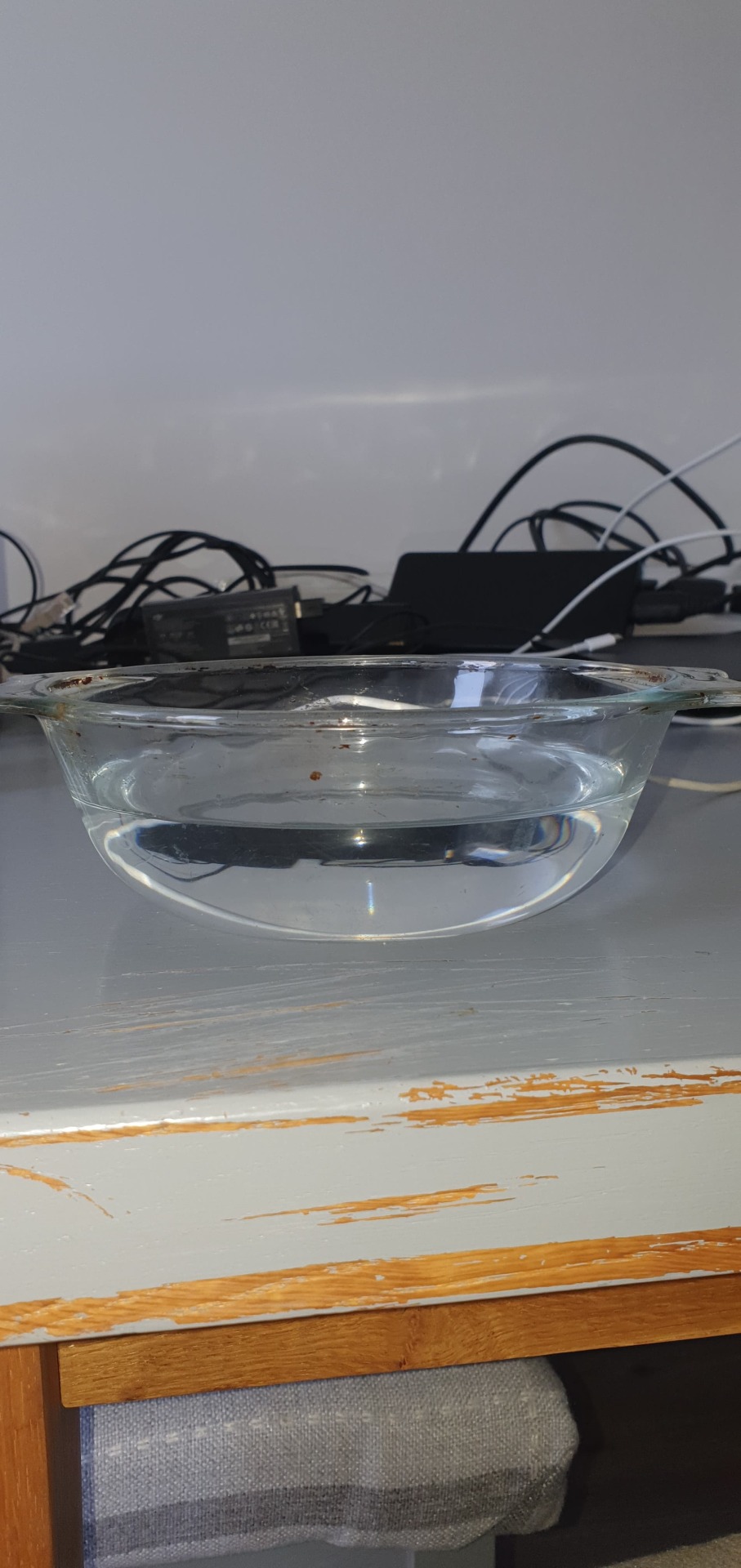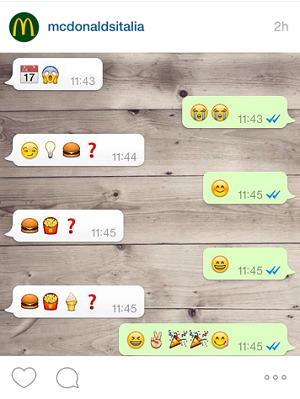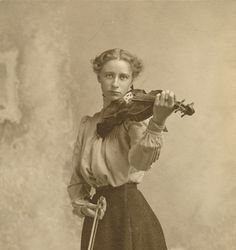Text
Project idea No.3
My next project was once again inspired by my college days. After I had exhausted myslef trying to take photos of water in macro I was at a loss completely. I thought about possibly going back to basics photography and this took me back to my first year of college.
During my first year of photography we created the standard pinhole camera in a box situation. I remember my photo took 1hr and 30 minutes to develop and for a first go at pinhole photography I personally feel like I did rather way.

So as you can probably tell by that small anicdote about my college years , for this project I was going to attempt to create a pinhole print of life trapped in quarentine. I was so excited about this project that I started getting all my materials together immeadiately. Without considering the fact I would need a darkroom..
When I eventually realised this I was a bit stressed to say the least , I was quickly running out of time to create work for this end of year project. I was desperately trying to look into what I could do. I thought about buying the chemicals myself and creating my own darkroom however my only space to do that would be my house and my house is quite small.
So I turned to my old sketchbooks for inspiration and I found work from when the artist Justin Quinnell came to my college.
0 notes
Text
Project idea No. 2
When trying to come up with an idea for a project I thought about using water to cross certain colours and the way to do this (in my mind) was to look into macro drop photography. I looked into how to acheive this in my own home with the limited resources I had.
Turns out I needed a decent camera which I had, a bowl of water which I also had, and finally 2 flash guns. These I did not have. However I thought we’ll try with one and see what happens.

As you can tell it does just look like a rather well lit bowl. So I figured I would try and use some natural light instead. My plan was to move it onto the window sill and see what happened.

This was the best shot I got out of 30.
With the amount of effort I had put into my research as well as the fact it was getting quite late and to be perfectly honest I had given up by this point I decided to look into different projects.
I feel like when I can eventually get the equipment together I will definitely try this again though.
0 notes
Text
colour theory - the phsycological properties of colour
Before I even looked into the world of Fan Language I had thought about looking into how colours can represent certain things. A while ago I had a friend who had been to art therapy and was looking into specialising in it when she went to university. She did a project on how flowers can be used as messages.
So if a rose meant ‘I love you’ ect. I wanted to expand on this and look deeper into the meanings, the more basic feelings that were created. This lead me on to Colour Theory.
When looking into colour theory , the premise of the ideology is very simple. As the colours that we see every day create a certain feeling for a person for instance:
-Red: Red is the most primal colour, it tricks our body into raising our pulse rate to the point where the ‘fight or flight’ instict kicks in and makes us act rashly.
-Blue: Blue is said to be the most calming colour. As red creates a more physicl reation blue creates a more intelectual reation as it calms our brainwaves and helps clear our thoughts. However blue can be seen as a cold unloving colour due to the more intellectual properties.
-Yellow: Yellow is the strongest colour to affect the human psyche because of this yellow can create drastic mood swings. It’s strongest property is the fact its affects a persons self asteem. When looking at yellow for a short amount of time it can lift a persons spirits to the point where they feel confident in themselves however , if a person is overexposed to yellow to too long this can effect them in the opposite way. Their self asteem will plummet.
These are just some examples of colour theory effecting the human psyche. As you can tell there is so much more to explore however I needed to find a way to create photos around this.
Reference: http://www.colour-affects.co.uk/psychological-properties-of-colours
1 note
·
View note
Text
Last time
The last time I wrote on this blog , I was looking into how fan language and the modern approach of emoji’s were linked. I’m not anymore.
As you probably know by now it’s been a good couple of mpnths since the world got diagnosed with the Corona Virus ( COVID-19) and to say this put a slight hold on my work as a photographer would be a massive under exageration.
I was completely at a loss for what to do for a while mainly because of the fact I had no studio and no access to my models. I was also trapped inside my house for the forseeable future so I decided to try some home photography.
I looked into some ways to create amazing photography at home. This came up with many suggestions, however the best one i found was water photography. I thought about using dyed colour to look into colour theory.
0 notes
Text
What I Hope My Work Will Achieve
I hope that my work will show the correlation between fan language and the emoji language that we have created and highlight how amazing it is that the human race is still finding new ways to communicate with each other even after 100 years.
I hope to highlight the restraint that women were breaking out of by using their own fashion accessories to fight back against the patriarchy.
Finally, I want to learn the fan language itself purely so I can know it 😊
0 notes
Text
Will Emoji Take Over?
As much as I have written about the innovative ways that emoji has changed our futures into a brighter one, there are obviously some people who just have to put a damper on things. Mainly the people who are scared that emoji will replace ‘speaking language’. I myself do not believe this to be true, this is because certain languages (Spanish, Chinese, French, English) have taken thousands and thousands and thousands of years to develop into what we have today. The following excerpt is from ‘The Conversation’
“The answer, in each case, is no. When we communicate, the message conveyed by the spoken or written word is just one of the elements in what we might think of as a “communicative context”. In spoken communication, researchers now know that if gestures are suppressed, then the speaker becomes less fluent. In digital texting, emojis also convey meanings that both overlap with and add to the written text. Far from replacing language, the visual symbols in fact enhance our ability to converse with one another. They also facilitate more effective communication, a claim which is clearly supported by our study.
It is not lazy to naturally seek more efficient ways to communicate with others. We are creative creatures, and new technology and the new systems of communication it brings can enable quicker, and more efficient communication.
In the future, we can expect emojis to continue their unprecedented rise: my prediction is that they will increasingly begin to invade digital communication in professional contexts too, such as work emails – especially as emoji-enabled keyboards become standard in all forms of computing technology.”
0 notes
Text
similarities between the two languages
Throughout this blog, I feel as if I have done a lot of talking about these two languages separately but I haven't actually compared them together:
1. both languages include symbolism rather than words making it easy to understand if a person knew.
2. Both languages were purely made for the young adults of the era to talk together without being caught by their elders.
3. Both languages created freedom amongst their users ( the fan with women taking back their sexuality and the emoji with creating a wide-spreading communication platform for all languages to use)
I purely love the fact that two separate eras have come up with something so sneaky in nearly the same way in two different decades.
0 notes
Text
Advertisement and emoji’s
Studies have found that emoji is the highest spoken ‘language’ out there at the moment which makes sense as you don't really need to learn anything. Emoji in a sense is just picking a tiny emoticon that replicas your face. Like for instance if I thought something was funny I would use a laughing emoji.
So on that thought, if a multimillion corporation wanted to reach the masses at a global expanse what language would they use?
.. they would use emoji, because everyone knows it, from teenagers to fully grown adults, it is a well-known language.
So Mcdonalds did just that, they created a simple ad that depicted a friend asking another friend if they wanted Mcdonalds.

This advert ran in Italy. The only thing that could possibly tell the reader that is by the user name up the top (and even that’s a bit vague) .But I think my point is made, regardless of where a person is from they will most likely be able to read emoji.
0 notes
Text
The rise of the Emoji https://medium.com/@BijouConcierge/the-rise-of-the-emoji-communication-in-the-smartphone-era-d94295436d34
So, when was the emoji invented?
The origins of the term itself stem from the Japanese language:
(e ? picture) ? (mo ? writing) ? (ji ? character)”.
This article from The Verge explains the origins of emoji in more details and how they became so popular. Shigetaka Kurita, a former employee of the Japanese telecommunications company, NTT DoCoMo, is credited as the inventor. At DoCoMo, Kurita sought a tool to simplify communication while simultaneously adding an emotional context typically absent from electronic communication. Kurita set to work, drafting the first 172 or so emoji himself in just 10 days.
Emojis were originally invented with the intention to keep up with the pace of technology by conveying messages with a flick. Today, they can be seen as a means of expression, in our day to day life as well as many advertising and social media campaigns. They were inspired by the Manga art.
They didn’t become a part of lives overnight. In fact, the Western world didn’t see the adoption of official emoji until 2010 when Unicode, an organisation that coordinates the development of messaging platforms, adopted them as the norm. Since then emoji has been included in a number of platforms including iOS and Android.
0 notes
Text
Jane Eyer and Women's Sexuality
Jane Eyer was a very prominent writer during the victorian age, with her beautiful way with words, when talking about romance she created a whole relationship in just a few words however she could just as easily break them aswell.
I bring up Jane Eyer as research because of one passage she wrote: “women are supposed to be very calm generally: but women feel just as men feel; they need exercise for their faculties and a field for their efforts as much as their brothers do; they suffer from too rigid a restraint, too absolute a stagnation, precisely as men would suffer; and it is narrow-minded in their more privileged fellow-creatures to say that they ought to confine themselves to making puddings and knitting stockings, to playing on the piano and embroidering bags. (ch. 12)”
See I love this passage as it tells the reader what life must have been like as a woman living in the victorian era, not being allowed to create a career for herself and having to just mind the household all the time?
It just sounded like women were treated as housepets. Without a personality or a sexuality. I like the fact that a fan language was created, purely because it gave women back their freedom.
2 notes
·
View notes
Text

As you can see here with victorian photography the model never smiled, this was because the photo would take such a long time to develop that to smile would cause the model to much pain to keep it going. I aim to keep that same seriousness in my work however to modernise my photos I will be keeping the colour in the photo. I am still debating at this point whether to use digital or keep with the old-time theme and use film.
Usually, in the victorian era, a large format plate camera would be used to take portraits. This would cause an issue in my practice due to the fact that I do not have access to a large-format camera.
0 notes
Text
The history of fans https://www.thefanmuseum.org.uk/fan-history
Early History
Pictorial records showing some of the earliest fans date from around 3000 BC and there is evidence that the Greeks, Etruscans and Romans all used fans as cooling and ceremonial devices, while Chinese literary sources associate the fan with ancient mythical and historical characters.
Early fans were all of the fixed type, and the folding fan does not appear either in the East or the West until relatively late in its history.
The first European folding fans were inspired by and copied from prototypes brought in to Europe by merchant traders and the religious orders who had set up colonies along the coasts of China and even Japan. These early fans were reserved for Royalty and the nobility and, as expensive toys, they were regarded as a status symbol. While their montures (i.e. sticks and guards) were made from materials such as ivory, mother of pearl and tortoiseshell, often carved and pierced and ornamented with silver, gold and precious stones, the leaves were well painted by craftsmen who gradually amalgamated into guilds such as The Worshipful Company of Fan Makers.
Fans in the Seventeenth Century
Fixed fans and folding fans can be seen in portraits of ladies throughout the seventeenth century, a crucial time in the development of the folding fan in Europe. In the earlier part of the century, fixed fans, consisting of feathers set into a handle of varying splendour, were the norm. As the century progressed, folding fans gained in popularity until, by the end of the century, they had completely superseded fixed fans. It is also interesting to note that while folding fans can be seen in the hands of royalty and grand ladies, fixed feather fans were used by the “bourgeoisie” or less well-off.
Fans in the Seventeenth Century
Fixed fans and folding fans can be seen in portraits of ladies throughout the seventeenth century, a crucial time in the development of the folding fan in Europe. In the earlier part of the century, fixed fans, consisting of feathers set into a handle of varying splendour, were the norm. As the century progressed, folding fans gained in popularity until, by the end of the century, they had completely superseded fixed fans. It is also interesting to note that while folding fans can be seen in the hands of royalty and grand ladies, fixed feather fans were used by the “bourgeoisie” or less well-off.
Fans in the Nineteenth Century
The political turmoil that marked the end of the eighteenth and the beginning of the nineteenth centuries meant that fans became “less work intensive” and small brisé fans regained popularity while printed fans of every kind were available to most classes. At the same time, fans from China, made specifically for the export market, adapted to the smaller format that had become popular in the West.
Arguably, the most lavish fans date from the second half of the nineteenth century. The artists who painted these fans were often fashionable painters who signed their work – as did the tabletiers who carved the magnificent sets of sticks and guards (montures). Great maisons sprang up in Paris, which had become the epicentre for the manufacture of fine quality fans. These maisons would become bywords for the creation and distribution of objets de luxe, furnishing royalty and the upper echelons of polite society with fans of particular quality.
The latter part of the nineteenth century also ushered in one of history’s greatest artistic movements: Impressionism. Many of the leading Impressionists – and indeed Post-Impressionists – painted fan leaves, the compositions of which were frequently inspired by Japanese art and culture, which continued to shape and inform art and design in the West.
0 notes
Text
women's sexuality in the victorian era
After decoding the fan language and emoji language i decided to look into the sexuality of women in the victorian times. I felt that the fan language would make more sense to me ( as in why it was so secretive) if I knew the conditions that women were under in the victorian age.
I eventually came across an article from the British library which described gender roles and norms in the 19th century. One paragraph caught my eye almost immediately.
‘At the same time, a young girl was not expected to focus too obviously on finding a husband. Being ‘forward’ in the company of men suggested a worrying sexual appetite. Women were assumed to desire marriage because it allowed them to become mothers rather than to pursue sexual or emotional satisfaction. One doctor, William Acton, famously declared that ‘The majority of women (happily for them) are not very much troubled with sexual feeling of any kind’.’
The line at the end of that paragraph caught me off guard a bit. The fact that a sexual feeling for a woman was seen as troubling was baffling to me.
0 notes
Text
Emoji Dictionary
😀 Grinning Face
The happy smiling face is one of the most common emojis and universally applicable: you just want to say hello, express joy or excitement about something or brighten up a short text.U+1F600
😃 Smiling Face With Open Mouth
Typical smiley face with open mouth and oval eyes. Is in a positive mood, shows its teeth and laughs cheerfully. Expresses enthusiasm: from a cheerful greeting to boundless joy.U+1F603
😄 Smiling Face With Open Mouth And Smiling Eyes
Smiley's mouth is wide open, its eyes squeezed shut with joy. Laughs loudly, cheerfully and heartily. Only the typical emoji eyes distinguish it from the classical smiley face. Can also be used for sarcasm.U+1F604
😁 Grinning Face With Smiling Eyes
Happy face with a mischievous laugh. Represents lightheartedness and exuberance. Full of joy due to an event, excited and agitated or just a bit embarrassed.U+1F601
😆 Smiling Face With Open Mouth And Closed Eyes
Emoji is on the verge of a fit of laughter because something is so silly or incredibly funny. Also, mischievous or bitchy laughter about an event, or something that happened to another person.. Means the same as “XD“ and “X“ as a text-based emoticon.
Surprisingly after looking online for over an hour, I found barely any emoji dictionaries out there that translated the emojis that I wanted however I was sure that if I asked my younger brother he would be able to help me.
0 notes
Text
Fan Language - Dictionary
Yes: Touch your right cheek with your fan and leave it there.
No: Touch your left cheek with your fan and leave it there.
I’m married: Fan yourself slowly.
I’m engaged: Fan yourself quickly.
I desire to be acquainted with you: Place the fan in your left hand in front of your face.
Follow me: Place the fan in your right hand in front of your face.
Wait for me: Open your fan wide.
You have won my affection: Place the fan over your heart.
Do you love me?: Present the fan closed to them.
I love you: Draw the fan across your cheek.
Kiss me: Press a half-open fan to your lips.
I love someone else: Twirl the fan in your right hand.
We are being watched: Twirl the fan in your left hand.
You are cruel: Open and close the fan several times.
I hate you: Draw the fan through your hand.
Forgive me: Hold the fan open in both hands.
I am sorry: Draw the fan across your eyes.
Go away: Hold the fan over your left ear.
Do not be so imprudent: Make “threatening movements” with a closed fan.
Do not betray our secret: Cover left ear with a fan.
We will be friends: Drop the fan.
Obviously, this dictionary vaguely fits with the emoji tone that I will be working with however it may need some tweaking to fit.
0 notes
Text
Project Proposal
After much thought about my discovery, a plan was forming in my imagination of a project. The idea was to compare fan language with emoji or even today's slang.
This was because the similarities were so close, the fact that young adults were using fans to flirt with each other or even just to talk without their elders knowing reminded me so much of when I used to text my friends or a certain partner I was interested in.
The plan was to take a model and dress them in victorian clothing (fan and all) place a frame around them with a certain emoji placed onto the frame which would represent the message that the fan was conveying. This then meant learning the fan language itself. As well as refreshing myself with emojis and their meanings.
0 notes
Text
The creator of Fan language
From what I can gather from my research is that ‘Fan Language’ was mainly created for a publicity stunt.
‘Before the Victorian era, fans were prohibitively expensive and were most commonly used in the royal courts of Denmark and France. English women wanting them in the eighteenth and early nineteenth centuries were obliged to buy them imported. Fortunately for the thriftier ladies of fashion, the mass production of the Industrial Revolution soon made them available to the wider public.The popularity of fans during the Victorian period was due in no small part to French fan-maker, Duvelleroy. When his first London shop opened on Regent Street in 1860, sales were propelled by the shop’s proprietor, Duvelleroy’s son, Jules, who encouraged the development of the language of fans through guides he published in leaflets. Some of these signals had been used before, but many of them he invented.The “language” was a set of signals ladies could give with the fans to communicate with their suitors without speaking to them. While it is true that certain signals had been in use in the royal courts of Europe before Jules Duvelleroy captured the imagination of his shoppers, the much expanded set of signals he fostered started out as little more than a clever marketing gimmick. It was romantic, flirtatious, and ladies loved it.’ - https://dirtysexyhistory.com/2016/08/04/flirtation-victorian-style-the-secret-language-of-fans/
However, this does remind me of another advertising ploy that managed to capture the attention of young adults. Emoji.
Now as a young adult who spent my adolescence on my phone I can honestly say that when Emoji’s became popular I was so curious about them. I mean this created a whole new version of communication for my generation. One that our parents had no idea what any of it meant.
0 notes